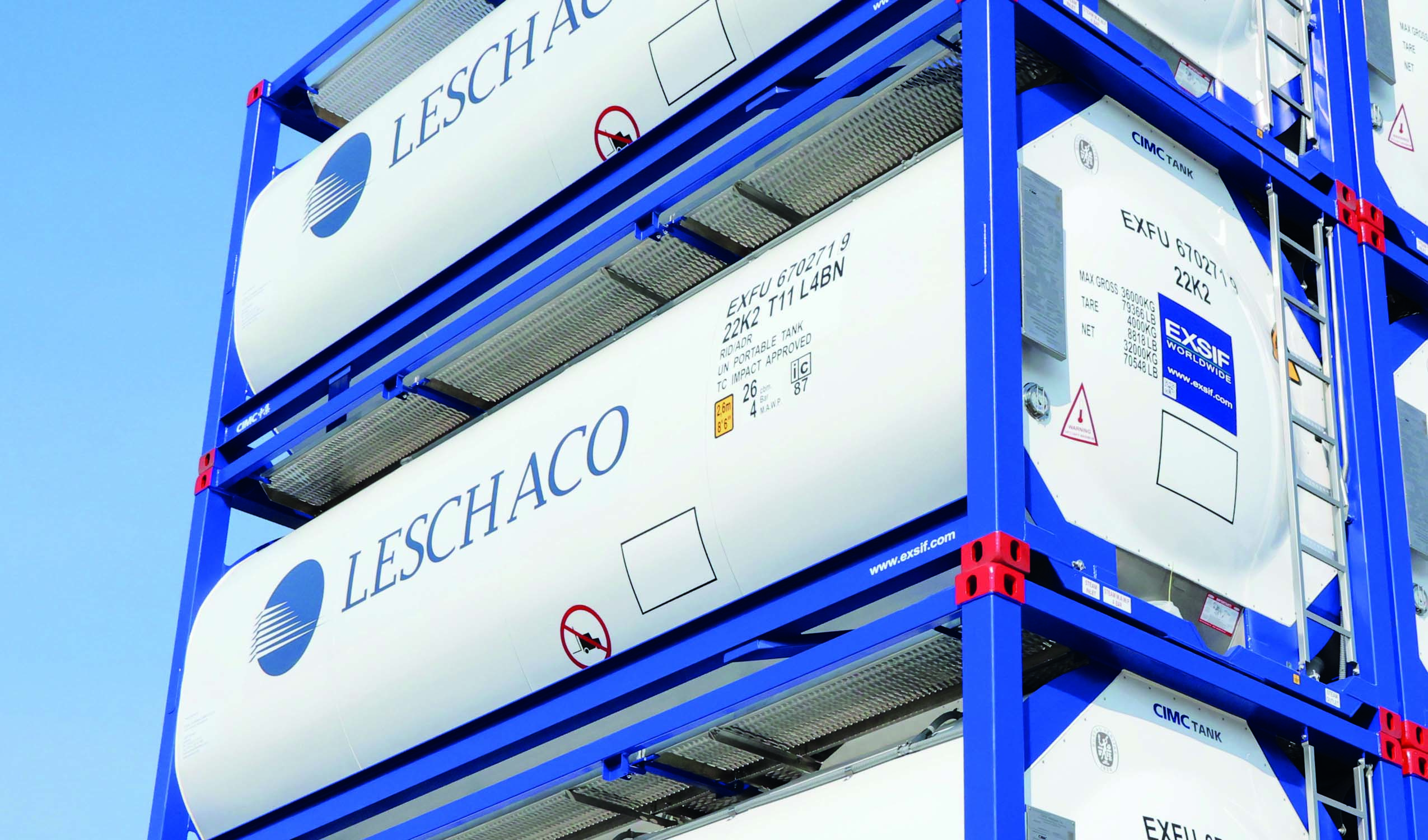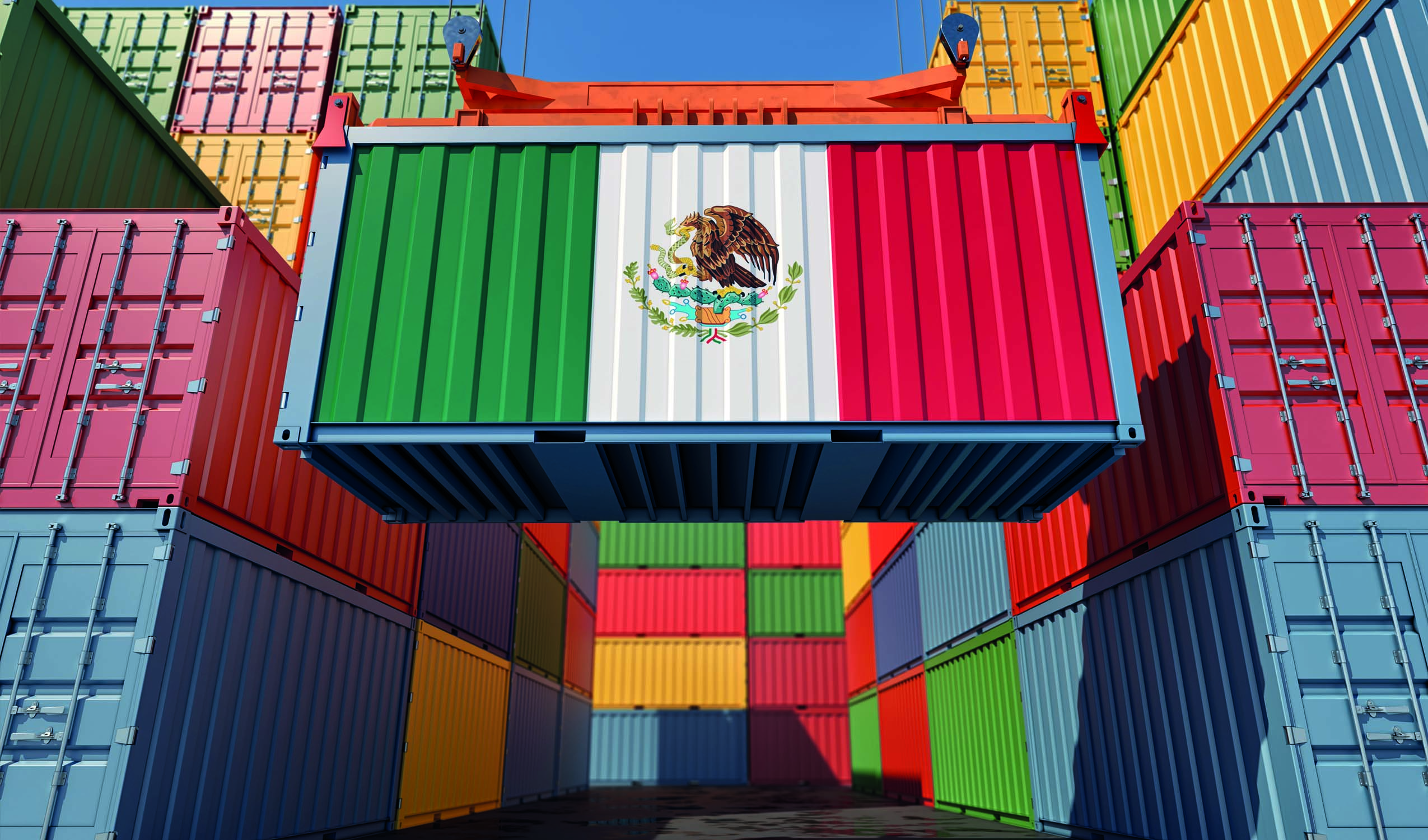The Leschaco Dangerous Goods Logistics Blog
Dangerous goods logistics is a matter of trust. Because dangerous goods logistics not only requires extensive knowledge and experience, but also a sense of responsibility for people and nature.
Advances in natural science, and chemistry in particular, have significantly raised our standard of living in recent decades. At the same time, the number of registered industrial chemicals has more than tripled in the last 20 years. Today, about 350,000 different substances are produced artificially. Scientists assume that there are around 6,000 substances among these that must be classified as dangerous goods.
With globalization, the growing international division of labor, the requirements for safe dangerous goods logistics are also increasing. With the dangerous goods logistics blog, Leschaco wants to offer a platform for the transfer of knowledge around this important topic for people and nature.
What is actually dangerous goods logistics? A definition.
By dangerous goods logistics, we mean all processes relating to the storage, packaging and transport of dangerous goods. For example, the “Agreement concerning the International Carriage of Dangerous Goods by Road(ADR)” defines gases, explosives, ammunition and fireworks, flammable, toxic, infectious, radioactive, corrosive, water and environmentally hazardous substances as dangerous goods.
To ensure safety throughout these processes, special technologies and equipment are required, such as fire protection systems, extinguishing devices, fireproof partitions, and chemical-resistant and particularly shockproof containers. But it is also about complex knowledge about the combination of dangerous substances, i.e. the knowledge of which dangerous substances must not come into contact with which substances under any circumstances: What is allowed to be stored and transported together with what at all? How must containers that have come into contact with specific dangerous goods be cleaned?
Dangerous goods logistics requires extensive specialized knowledge and careful and sustainable documentation of all processes so that risks can be minimized and, in the event of an accident, damage can be limited as far as possible. An essential part of this documentation is the conscientious marking of the dangerous goods before transport, i.e. the correct labeling and assignment to the appropriate dangerous goods class. Correct labeling is essential for safe loading, correct transport and a situation-appropriate procedure in the event of damage.
The latest posts on the dangerous goods logistics blog

Current challenges in contract logistics
For Leschaco, contract logistics and dangerous goods logistics go together like butter and bread. This is because contract logistics always shows its strengths where complex processes are involved, where it is not enough to simply transport goods from A to B, but where profound knowledge is required to gain an overview of complicated logistics chains in their entirety and keep them under control, where there really must be no room for error at any point in the process so that the entire process is not jeopardized. And where, if not in the transportation of dangerous goods, doesn’t everything depend on everything? Michael Clover, Head of Commercial Development at Transport Intelligence Ltd., exclusively presents the key findings of the latest Global Contract Logistics Report 2023.

The round has to go into the square. The life cycle of a tank container.
The round has to go into the square. The life cycle of a tank container. Leschaco is one of the pioneers of tank container logistics. We have been using tank containers for the safe transport of dangerous goods for around 50 years. Today, we have a fleet of more than 5,000 of our own tank containers in operation worldwide. They are the backbone of our logistics business. It is time to take a thorough and fundamental look at this “workhorse”. What actually is a tank container? A definition Basically, we understand a tank container simply as a container for transporting liquids or gases. These containers are used on ships as well as on the road, on rail and in air logistics, i.e. also in combined transport. In order for tank containers to be used for these diverse purposes, they must of course be standardized in terms of size and composition. These standards have been established by the International Maritime Organization (IMO) under the ISO 668 standard. For this reason, tank containers are often referred to as ISO tanks or intermodal tanks. The development of tank containers has been significantly influenced by the requirements of the chemical and food industries. The

Every grain of sand counts: Leschaco as official consultant for dangerous goods
Every grain of sand counts: Leschaco as official consultant for dangerous goods. Have you ever been confronted with the fact that the regulations of the country of origin, international transportation, and regulations in the country of destination are completely opposed to each other in an international movement of dangerous goods? How have you dealt with this issue? Have you tried to adapt your shipment at intermediate points located anywhere in the world to comply with the regulations of the country of origin, international transportation and then with the country of destination? If so, have you considered that this misalignment between dangerous goods regulations and efforts to thoroughly adapt shipments, exponentially increases the risk of facing a potentially dangerous goods emergency with exposures to life, environment and/or property, in addition to the associated time and costs? On the other hand, the principles underlying the regulation on the transport of dangerous goods from the UN Model Regulations for the transport of Dangerous Goods state the following: Transport of dangerous goods is regulated to prevent, as far as possible, accidents to persons or property and damage to the environment, the means of transport employed or to other goods. At the same time, regulations

Leschaco at the 57th EPCA Annual Meeting in Vienna
Leschaco at the 57th EPCA Annual Meeting in Vienna The 57th Annual Meeting of the European Petrochemical Association – “EPCA” for short – will be held in Vienna from September 25 to 28, 2023. Of course, Leschaco is also present as a member of the association. Here we focus on ensuring efficient safety standards within the dangerous goods industry. This year, the convention is all about “Collaboration for Impact” – and by that, it means companies, industry associations and representatives working together for greater impact or, more readily, influence on energy security, affordability and sustainability. The European Petrochemical Association (EPCA) as a leading organization and its members are dedicated to the advancement of knowledge and best practices in the petrochemical and related industries. How does EPCA 57 position itself? Safety in the hazardous materials industry is critical because our industrial sector works with hazardous materials. And we are all aware that these materials can have an impact on people and the environment. EPCA 57 aims to showcase best practices, latest innovations and state-of-the-art technologies to enhance safety in our industry and minimize accidents. The conference will provide a platform for the exchange of knowledge and experience between professionals, academics, regulators

Warehouse Netherlands
Consideration of the volatile conditions in the dangerous goods logistics market and the significance of the new Leschaco warehouse in the Netherlands. This blog post takes a look at current market dynamics, the economic outlook, and the importance of consistent compliance. We also address our strategic decision to build a new hazardous materials warehouse in Moerdijk in the Netherlands. We focus on its importance in the current market environment. Current market and economic outlook The global chemical market is confronted with complex framework conditions. These include recent geopolitical events such as the Ukraine war and the corresponding negative developments on the gas market. For example, Russia’s attack has led to disruptions in supply chains and price volatility in the gas market. According to the Reuters news agency, the German chemical association VCI expects a further decline in the national chemical industry in 2023. The reasons for this are persistently high inflation, a weak global economy, the European energy crisis and regulatory problems in Germany. Accordingly, industrial production including pharmaceuticals will decline by 5 percent in 2023, while industry sales are expected to fall by as much as 7 percent, the VCI said in its quarterly report. These forecasts make it
This is where the editorial team of the Leschaco dangerous goods logistics blog blogs about the latest news and background information on dangerous goods logistics. The contributions do not reflect the opinion of Leschaco in every case, but always the position of the respective authors. Members of the editorial team come from trade media, agencies, friendly companies or directly from Leschaco. You can reach us by email . We are looking forward to your suggestions and questions.

